
SILVER COIN - 500 Krˇnur - 1100TH ANNIVERSARY OF FIRST SETTLEMENT
(KM 20)
Date: A.D. 1974
Obverse: Woman walking with cow with the dates 874 in front and 1974 behind
Reverse: The four traditional protector spirits (LandvŠttir) of Iceland - 500 FIMM HUNDRUđ KRËNUR - ISLAND
Engraver: Throstur Magnusson
This is a stunning silver 500 krˇnur coin minted in 1974 commemorating the 1100th year after the first settlement of Iceland in 874. The coin was designed by the Icelandic artist Thr÷stur Magnusson and was struck by the Royal Mint of Great Britain. When a major reform of the coinage in the early 1980s resulted in a complete re-design of the circulating coins of Iceland, the new obverses were all taken from Magnusson's highly distinctive treatment. A variety of aquatic life was portrayed on the reverses, including dolphins, cod and northern shrimp. Magnusson has also designed about 180 stamps, and his stamp designs have won "The Most Beautiful Icelandic Stamp of the Year" every year from 1986 to 1992. The obverse of the coin depicts a cow and a woman with the dates 874 and 1974, these are the dates of the first settlement in Iceland and the current date at the time of the issue of the coin. The Icelandic Age of Settlement is traditionally considered to have begun in 874, continuing until 930 when most of the island had been claimed and Althingi, the Icelandic Commonwealth, was established at Thingvellir. While Ingˇlfur Arnarson and his family are considered to be the first of the Norse settlers and are credited with the founding of Reykjavik, there is some evidence that Gaelic monks from a Hiberno-Scottish mission were already on the island before the arrival of the Norse settlers. The reverse of the coin has the text 500 FIMM HUNDRUđ KRËNUR, or 500 Hundred Kroner, around the top and ISLAND below. In the center are the LandvŠttir or the four protective spirits of Iceland. These spirits are depicted on the coat of arms of Iceland and are identified as Griungur (the bull), Gammur (the eagle), Dreki (the dragon), and Bergrisi (the rock giant). |
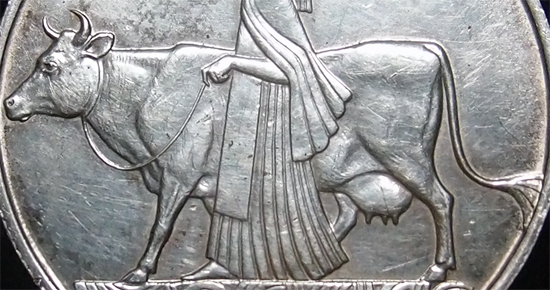 |
|
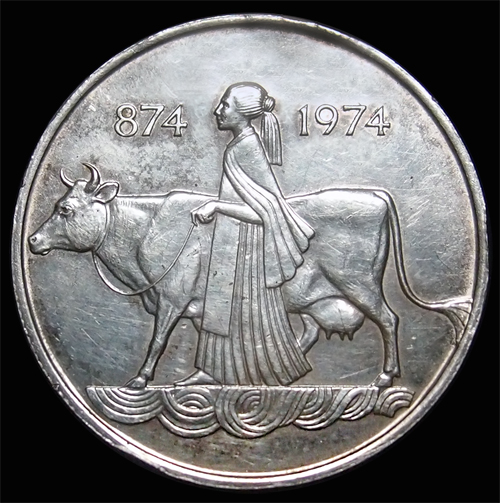 |
|
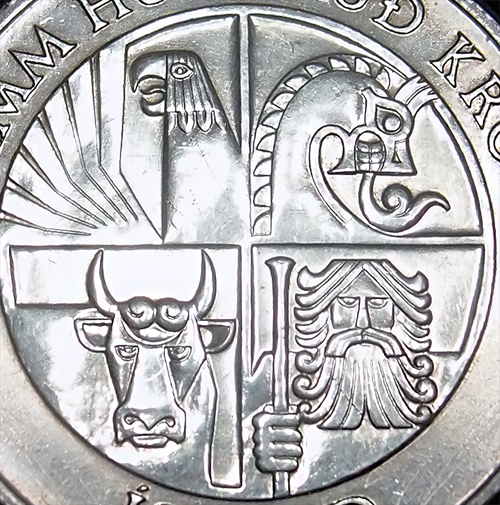 |
Iceland is protected by four great guardians who are known as the four landvŠttir who protect the land and promote prosperity. The story of the landvŠttir is from the Saga of King Olaf Tryggvason in the Heimskringla, written in Old Norse in Iceland by the poet and historian Snorri Sturluson around 1230 A.D. It states that King Harald Bluetooth Gormsson of Denmark, wishing to invade Iceland, had a wizard send his spirit out in the form of a whale to look for points of vulnerability. As he explored the island he saw that all the hillsides and hollows were full of landvŠttir, both large and small, in all directions. As he circled the island he saw "nothing but sands and wasteland and high waves crashing on the shore." and abandoned his plans to invade. The four landvŠttir are considered the guardians of the four quarters of the island: Dreki the dragon in the east, Gammur the eagle in the north, Griungur the bull in the west, and Bergrisi the giant in the south.
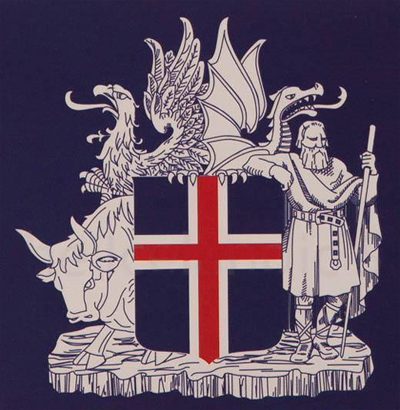 |
 |
Left: The four landvŠttir (Bull, Eagle, Dragon and Rock Giant) as they are depicted on the national coat of arm of Iceland. Right: A familiar depiction of the landvŠttir as they are depicted on the logo of the Central Bank of Iceland.
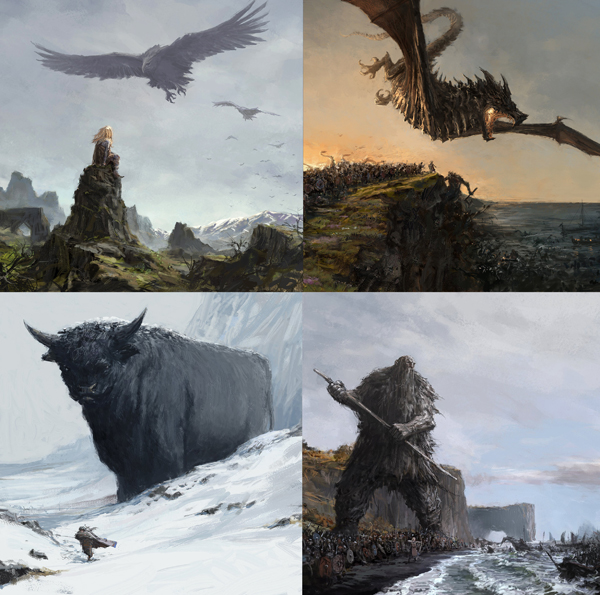 |
Beautiful depictions of the four landvŠttir by Icelandic painter, illustrator and concept artist Asgeir Jon Asgeirsson of Reykjavik. Asgeirsson was Art Director and Lead Concept artist of Eve Online and currently works at Solid Clouds. Asgeirsson created these works for Me vŠttum, an album by the Icelandic metal band Skßlm÷ld released in 2014. He drew inspiration from the four landvŠttir and the lyrics by bassist and vocalist SnŠbj÷rn Ragnarsson. For more work by Asgeirsson go to: https://asgeir.artstation.com/
